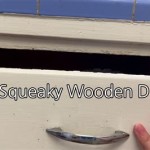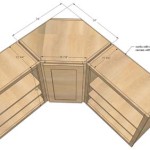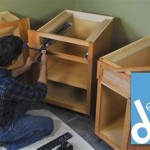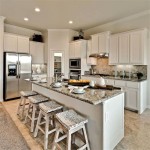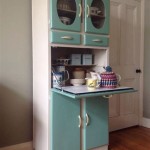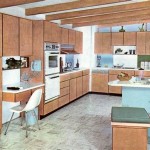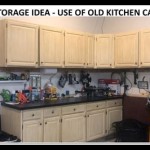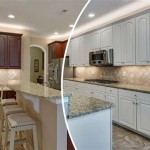Most Durable White Kitchen Cabinets: A Guide to Longevity and Style
White kitchen cabinets remain a consistently popular choice for homeowners seeking a bright, clean, and timeless aesthetic. However, maintaining the pristine appearance of white cabinetry necessitates careful consideration of durability. The kitchen environment, with its constant exposure to moisture, heat, and potential impacts, demands robust materials and construction. Selecting the most durable white kitchen cabinets involves understanding the various materials available, the quality of finishes, and the construction techniques employed. This article will delve into these factors, providing a comprehensive guide to choosing white kitchen cabinets built to last.
Understanding Cabinet Materials and Their Durability
The core material of a cabinet significantly impacts its overall durability. Different materials offer varying degrees of resistance to moisture, impact, and wear. Common cabinet materials include solid wood, plywood, medium-density fiberboard (MDF), and particleboard. Each possesses unique strengths and weaknesses that affect its suitability for white kitchen cabinets intended for long-term use.
Solid Wood: Solid wood cabinets are often perceived as the gold standard for durability and longevity. Hardwoods like maple, oak, and birch provide exceptional strength and resistance to dents and scratches. However, solid wood is susceptible to expansion and contraction due to changes in humidity, which can lead to warping or cracking over time. This is particularly relevant in kitchens, where temperature and humidity fluctuations are common. While solid wood can be treated with sealants and finishes to mitigate these effects, it remains a factor to consider. Properly kiln-dried and sealed solid wood cabinets, however, can last for generations, making them a worthwhile investment for homeowners prioritizing longevity.
Plywood: Plywood is an engineered wood product composed of multiple layers of wood veneer glued together with the grain running in alternating directions. This construction provides exceptional strength and stability, making plywood highly resistant to warping and cracking. Plywood is also less susceptible to moisture damage compared to solid wood, making it a more suitable choice for areas prone to spills or high humidity. High-quality plywood, with a sufficient number of plies and a durable adhesive, offers excellent structural integrity and can withstand the rigors of daily kitchen use. Look for plywood with a rating of "A" or "B" for the best surface quality and minimal knots or voids.
Medium-Density Fiberboard (MDF): MDF is another engineered wood product made from wood fibers bonded together with resin under high pressure and heat. MDF offers a smooth, consistent surface that is ideal for painting or applying veneers. It is also less prone to warping than solid wood. However, MDF is more susceptible to moisture damage than solid wood or plywood. When exposed to water, MDF can swell and lose its structural integrity. For white kitchen cabinets, where moisture resistance is crucial, it is important to ensure that MDF components are properly sealed and protected with a durable finish. MDF is often used for cabinet doors and drawer fronts due to its smooth surface and ability to be easily shaped. Consider MDF with a moisture-resistant (MR) rating for added protection in the kitchen environment.
Particleboard: Particleboard is the least expensive option among cabinet materials. It is made from wood chips and sawdust bonded together with resin. Particleboard is less dense and less durable than solid wood, plywood, or MDF. It is also highly susceptible to moisture damage and can easily crumble or disintegrate when exposed to water. While particleboard may be suitable for some components of less expensive cabinets, it is generally not recommended for white kitchen cabinets that prioritize durability. The cost savings associated with particleboard often come at the expense of longevity and resistance to wear and tear. Avoid using particleboard in areas that may be exposed to water or heavy use.
The Importance of Cabinet Finishes for Durability and Aesthetics
The finish applied to white kitchen cabinets plays a crucial role in both their appearance and their ability to withstand the demands of a busy kitchen. A durable finish protects the underlying material from moisture, stains, and scratches, while also contributing to the overall aesthetic appeal. Common cabinet finishes include paint, lacquer, and thermofoil. Each finish offers different levels of durability, ease of maintenance, and visual characteristics.
Paint: Paint is a popular choice for white kitchen cabinets due to its versatility and ability to achieve a wide range of colors and sheens. High-quality cabinet paint is typically formulated to be highly durable and resistant to chipping, scratching, and fading. Look for paints specifically designed for kitchen cabinets, as these often contain additives that enhance their resistance to moisture and grease. The application process is also critical to the durability of a painted finish. Multiple coats of primer and paint, properly applied and cured, will result in a smoother, more durable surface that is less prone to damage. Consider opting for a baked-on finish, where the paint is cured at high temperatures, for even greater durability. Choosing a paint with a satin or semi-gloss sheen will make cleaning easier and help to conceal minor imperfections.
Lacquer: Lacquer is a type of coating that provides a smooth, durable, and glossy finish. It is often used in high-end kitchen cabinets due to its elegant appearance and resistance to scratches and chemicals. Lacquer finishes are typically applied in multiple thin layers, resulting in a uniform and flawless surface. However, lacquer can be more susceptible to chipping than some paints, particularly in areas that experience frequent impacts. Proper application and maintenance are crucial to preserving the integrity of a lacquer finish. Look for catalyzed lacquer, which is more durable and resistant to solvents than traditional lacquer. While lacquer can be more expensive than paint, its superior finish and resistance to stains make it a worthwhile investment for homeowners seeking a sophisticated and durable look.
Thermofoil: Thermofoil is a vinyl laminate that is applied to MDF using heat and pressure. It creates a seamless, durable, and easy-to-clean surface. Thermofoil is a popular choice for modern kitchen cabinets due to its smooth, uniform appearance and resistance to moisture. However, thermofoil is more susceptible to heat damage than paint or lacquer. Prolonged exposure to high heat, such as from a nearby oven or stovetop, can cause the thermofoil to delaminate from the MDF substrate. When choosing thermofoil cabinets, it is important to ensure that they are properly installed with adequate heat shielding. While thermofoil is a cost-effective and durable option for many applications, it may not be the best choice for kitchens where heat exposure is a concern. Look for thermofoil with a thicker gauge for added durability and resistance to scratches.
Construction Techniques and Hardware for Enhanced Cabinet Lifespan
Beyond the choice of materials and finishes, the construction techniques employed and the quality of the hardware used significantly impact the durability and longevity of white kitchen cabinets. Well-constructed cabinets with robust hardware are less likely to sag, warp, or experience hardware failures, ensuring years of reliable use.
Cabinet Box Construction: The cabinet box, which forms the structural framework of the cabinet, should be constructed with durable materials and strong joinery techniques. Look for cabinets with sides, tops, and bottoms made from at least 1/2-inch thick plywood or MDF. Avoid cabinets with thinner materials, as they are more prone to warping and flexing under load. Common joinery techniques include dovetail joints, mortise-and-tenon joints, and dado joints. Dovetail joints are particularly strong and are often used for drawer boxes. Dado joints, where one piece of wood is inserted into a groove cut into another piece, provide excellent structural support. Ensure that the cabinet box is properly squared and reinforced with corner braces to prevent racking or distortion. Pay attention to the back panel of the cabinet, as it provides essential support and stability. A full back panel made from plywood or MDF is preferred over a flimsy cardboard or particleboard back.
Door and Drawer Construction: The doors and drawers of white kitchen cabinets are subjected to frequent use and potential impacts. Therefore, it is essential to choose cabinets with well-constructed doors and drawers made from durable materials. Solid wood or MDF are common choices for door frames, while MDF is often used for door panels due to its smooth surface and stability. Look for doors with mortise-and-tenon joints or dowel joints, which provide a strong and durable connection between the frame components. Drawer boxes should be constructed with dovetail joints or other robust joinery techniques. Ensure that the drawer bottoms are made from at least 1/4-inch thick plywood or MDF to prevent sagging under load. Soft-close hinges and drawer slides are a worthwhile investment, as they reduce wear and tear on the cabinet hardware and prevent slamming. They also improve the overall user experience and enhance the perceived quality of the cabinets.
Hardware Selection: The hardware used in white kitchen cabinets, including hinges, drawer slides, and pulls, plays a critical role in their functionality and durability. Choose high-quality hardware made from durable materials such as stainless steel or solid brass. Avoid inexpensive hardware made from thin metal or plastic, as it is more likely to break or malfunction. Hinges should be adjustable to allow for proper door alignment. Drawer slides should be smooth and easy to operate and should be rated to support the weight of a fully loaded drawer. Consider soft-close hinges and drawer slides, which prevent slamming and reduce wear and tear. Choose pulls and knobs that are comfortable to grip and that complement the overall style of the kitchen. Solid metal pulls are generally more durable than hollow metal or plastic pulls. Proper installation of hardware is also essential to its longevity. Ensure that screws are properly tightened and that the hardware is aligned correctly. Regularly inspect and tighten screws as needed to maintain the functionality and durability of the hardware.

The Most Durable Kitchen Cabinets And Cabinet Finishes

11 Of The Most Durable Kitchen Materials

Top 10 Characteristics Of High Quality Cabinets Cliqstudios

Countertops For White Cabinets Best Options 2024 Marble Com

White Kitchen Cabinets And Countertops A Style Guide

The Most Durable Painted Cabinet Finish 12 Pros Weigh In White Kitchen Design Luxury

The Best Sherwin Williams White Paint Colors For Cabinets

Best Countertop Options For White Cabinets Norfolk Kitchen Bath

Classic Off White Kitchen Design Happy New Year Home Bunch Interior Ideas

The Best Sherwin Williams White Paint Colors For Cabinets

